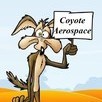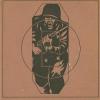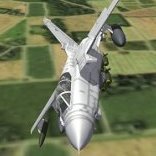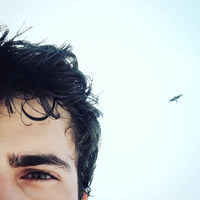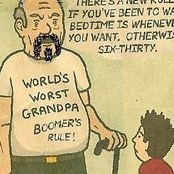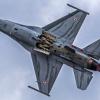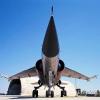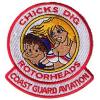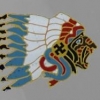Leaderboard
Popular Content
Showing most liked content on 06/29/2019 in all areas
-
8 points
-
7 pointsSabres cockpit wasnt animated because no slots...so moved flaps to same slot...dunno why seperate lol...map it 2048x2048 and 3072x3072 4096 is too big...it can be reduced then if people wish moved cog as it was more or less by pilots seat...its now nearer where should be..near wing chord...model was in feet...but back to metres and its correct size..L 11.9mx11.8 ws
-
6 pointsThe prologue 'Not really a mission report', you might say, but I was 'a man on a mission' in this case, and there is a strong combat sim connection! Like reading up on the subject, a museum visit can be a great way of deepening your ‘feel’ for the historical background of a sim you’re playing...thereby enhancing that semi-mystical quality called 'immersion'. I’ve been playing A2A’s most excellent Battle of Britain II solidly now for about six months, which has spurred me to expand my stock of books on the subject. And I enthusiastically grabbed the chance proffered by a short break in London last week to pick and plan some related museums to visit. Online research soon identified the two I most wanted to see and this report records and illustrates the first of my visits. I hope it and the one to follow will be of interest to anyone contemplating doing likewise, or those too far away to do so, and a useful supplement to the museums' own sites - which for Bentley Priory, you can find here. The 1969 film Battle of Britain has many memorable moments. For me, one of those moments is right at the end. Lawrence Olivier, playing Air Chief Marshall Sir Hugh Dowding - head of RAF Fighter Command and architect of the defensive system that nowadays bears his name – walks out of his office at Fighter Command HQ and onto the veranda. The tide has turned and he can sense his battle has finally been won. He looks out across the beautiful gardens, south towards London, like his own command bombed but not broken. The camera follows his gaze, up into the blue sky, as Ron Goodwin’s majestic main theme wells up. Churchill’s famous tribute to ‘the Few’ is displayed, and the credits begin to roll, starting with the Battle’s real participants and their casualties. The scene was of course filmed at the real HQ at Bentley Priory. Finding that it was now a museum, open to the public, I was quietly thrilled to think that I might see Dowding’s office, stand on that veranda and savour that same view – walking in the footsteps not only of ‘Sir Larry’, but also of Hugh Caswall Tremenheere Dowding, the great man himself. I’ll try to avoid duplicating here what you can readily find in the museum’s own website, and concentrate on what I saw when I went there. I had three nights at the St Giles Hotel at the bottom of Tottenham Court Road, a few yards from the junction with Oxford Street with the Centre Point block just across the road and the Post Office Tower behind the hotel on the other side. Bentley Priory was open ten till five (four, October to February) but only on one of the days of my stay – the Monday – so it was then, or never. I took the London Underground aka ‘Tube’ from Bond Street station a short walk away. Bentley Priory is in Stanmore, right out in ‘the leafy suburbs’, and the last station on the Tube’s Jubilee Line. You can walk the last mile or so, mostly uphill, but I jumped on a number 142 double-decker London bus at the stop immediately outside Stanmore station. The whole journey took over an hour each way, with about the last half of the Tube part out in the open, which is a bit less wearing, and more interesting, than being whirled along noisily in a tunnel. As a sop to any railway fans reading this, this is Stanmore station looking north. The station is used by conventional ‘overground’ trains as well as the Tube, all third rail electrified and operated by London Transport – or Transport for London aka TfL, somebody having decided such a rebrand was worth the cost and effort. Marketing and design companies must have seen them coming, as the saying goes. Those bright red buses can be seen a long way off. The visit - outside in The 142 service bus’s PA announces the museum stop, so I had no worries about when to hop off. The problem came when I turned left onto the drive leading to the museum, for it was sealed behind closed and apparently locked black iron gates. A carload of visitors prompted the (civilian) security chappie to emerge from the nearby gatehouse, letting me in too and allaying my fears that I had got the opening days wrong. The drive curved off to the left, and coming around the corner I stopped to savour my first real-life view of the former Headquarters of RAF Fighter Command. The building is surrounded, mostly at a respectful distance, by upmarket housing built or clad in similar fashion (sandstone?) to the Priory, and you can’t wander off too far before seeing signs saying ‘Residents only’. Apparently, like many such buildings, the Priory was camouflaged dark green and dark earth on the outbreak of World War 2, but this wasn’t reproduced in the film and the museum has sensibly chosen not to deface the fine building for the sake of turning the clock back. Of course, my first stop was the two aircraft prominently displayed outside. There seems to be a significant market for fiberglass replica Spitfire and Hurricane ‘gate guardians’ these days, and my first few minutes were spent photographing these two at Bentley Priory. The Spit apparently replaced a real one, of a later mark, since restored to flying condition. The replica looks well, although purists might find minor faults here or there. I wasn’t interested in rivet-counting or nit-picking. Those over-wing Type B roundels do look a tad small, though... Having built the Revell 1/32 Spit in the 1970s, I naturally recognised the squadron codes as belonging to 610 ‘County of Chester’ Squadron. There’s a plaque in front telling you the replica represents the aircraft flown by Cyril Bamberger. On the other side of the big pine tree is the replica Hurricane. As the plaque says, this one is in the markings of a machine flown during the Battle by Pete Brothers of 32 Squadron, complete with that unit's oversized code letters. Even though I knew these weren’t real aircraft, they made a suitable impression and of course I could not resist getting plenty of pics, despite the overcast skies. Stepping into the museum, this is the impressive sight that greeted me. Helpful staff on a desk ahead and right took my modest fee, gave me a site map and suggested I start by viewing the c.10 minute introductory film, run as required as visitors arrived. The staff immediately understood me when I described wanting to walk the scene at the end of the Battle of Britain film and I accepted their suggestion to ‘fly a holding pattern’ in one of the fine adjacent display rooms while waiting the few minutes for the next showing. The intro film is projected onto a wall just in front of you and is conventional – until it cuts to describing the role of Dowding. Suddenly, camera obscura style, the light goes on in the previously blacked-out room on the other side of the wall-screen. Behind the projected images, you can now see Dowding’s actual office, complete with his desk, green desk lamp and other fittings of the time, as featured in the BoB movie. A uniformed actor speaks to some of Dowding’s pronouncements as the story continues, ending with the Battle won and the great man being bidden ‘Goodbye, sir’ as his silhouette leaves the office for the last time in his career. It avoids the controversy over how Dowding was let go with little recognition at the time, but it’s still ‘lump in the throat’ stuff and not to be missed. After that you’re on your own, and can wander inside and outside at your leisure. Which is what I did, taking pictures as I went. This statue is of Dowding, just outside the door into the screening room and his office next door. A little further on is this group of typical RAF fighter pilots and the obligatory dog. In a room beyond is a mock-up Spitfire cockpit, complete with leather flying helmet and goggles, primarily for selfies. Yes I did get in, to find that the flying controls don’t operate realistically. So I quickly abandoned any notion of dismantling, smuggling out 'one piece at a time' and shipping home for re-assembly as a simming cockpit. And yes, as nobody was looking, I did don the gear and take the selfie, but I’ll need to be suitably bribed or have drink taken, to post that one! On a mantelpiece dominated by a fine portrait of King George VI, next to a silver or pewter Spitfire - a Mk XIV by the look of it - is a trophy, engraved 'Air Defence of Great Britain' and 'Kenley Inter Flight Cup.' Note the framed 1930s cigarette cards, to the right - I still have a couple of mostly-filled albums of these from the 1970s, as distributed with Typhoo Tea when it was sold loose-leaf, inside those little folded paper 'bricks'. Nearby is a wall display of squadron crests from the Battle, complete with their (mostly) Latin mottoes. I was soon to regret not paying the latter more attention. Other items on display here include a glass table-encased model of the Operations Room... ...and an actual RAF Ops Room clock, whose coloured triangular divisions tied into the colour codes of the arrows used on the Ops Room's plotting table to indicate how up-to-date the raid's plots were, as well as their direction. There's also a display of the Observer Corps, justly granted the 'Royal' prefix later, without whom enemy aircraft crossing the coast could not readily have been tracked, the RDF/radar stations of the time looking only out to sea - notwithstanding the Battle of Barking Creek when it all went a bit skew-whiff. The next room is a circular one adorned with many modern air combat paintings of the Battle. In this room there are also small consoles which invite you to take a quiz. I selected the ‘Expert’ version and only got 9 out of 14, earning me a ‘Wing Commander’ rating. If you want to do better, you will need to brush up on two topics – the meanings of the Latin squadron mottoes, and the phonetic alphabet used pre-1942. There are rather a lot of questions on these two things in the 'Expert' quiz, compared to what I would have expected would really represent expert knowledge of the Battle, if you will excuse my sour grapes! The museum map showed the next room to be the Operations Room. But I knew this had been moved underground before the Battle (to a bunker nearby, replaced during the Cold War with a deeper, nuclear-hardened one, no longer accessible). The museum’s Ops Room is actually a recreation of the first operational Filter Room which was in this building before the move underground. The display comes with a lot of supporting and fresh-looking carpentry and some cast or sculpted figures of the operators at their own particular type of plotting table. The Filter Room was where the actual reports from radar and other sources were first received and then compiled from the relatively raw data into usable information, before being passed on to the co-located Fighter Command Ops Room, and to those lower down the chain of command at Group and Sector level. There’s much good stuff on Wikipedia and other places online, but best single-source illustrated description I’ve seen of how ‘the Dowding system’ worked is in the Haynes 'Workshop Manual' title ‘Battle of Britain - RAF Operations Manual'. The museum Filter Room display includes informative panels - visible on the right, in the picture above - illustrating the roles of the personnel involved, and the tools they used. One of these panels is pictured below. Downstairs, there’s a corridor adorned with amusing, ‘gentle caricature’ portraits of RAF commanders from the Battle onwards. This opens out into another room displaying more aircraft paintings, like this one, which if a touch whimsical, I particularly liked and would consider buying as a print, if obtainable. Retracing my steps, I passed through the pleasant tea room in a ground floor conservatory. Had I not been up against the clock, I’d have loved to sit there a while and sup a cuppa - two sugars, please! - but it was time to go outside and retrace those famous footsteps… …to be continued!
-
6 points
-
4 points
-
4 points
-
4 points
-
3 points
-
2 pointsPretty inspiring story, I think. https://www.bbc.com/news/av/world-africa-48773018/south-african-teens-how-we-built-a-plane-in-10-days
-
2 points
-
2 pointsThe visit - walking the walk Before we move on, here's an amusing little Bentley Priory anecdote I remembered after reading a brief mention of it on the museum website. As recounted in David Irving's Rise and Fall of the Luftwaffe, in October 1938 that force's principal architect, General Erhard Milch headed a delegation which visited France and England. During the latter visit, Milch '...livened up one formal luncheon held in his honour at Fighter Command headquarters [Bentley Priory] when in his own blunt way he appealed umprompted to his hosts. 'How are you getting on with your experiments in the radio detection of aircraft approaching your shores?' Glasses clattered on the floor and a very red-faced air vice-marshal tried to laugh the question off. But Milch persisted that there was no need to be coy. 'So are we, and we think we are a jump ahead of you.' Notwithstanding that, German intelligence during the Battle seemed not to appreciate how well the radar network was tied into a whole defensive system. But there I was, in the very place this exchange played out, just over eighty years later. As head of Fighter Command and the principal architect of the air defense system, Dowding might have been the 'red-faced air vice-marshal' of Irving's account (supplied directly by Milch). I suspect the description of embarrassed surprise is over-egged for effect, although the reticent Dowding could reportedly become quite animated when talking about something important to him. Anyhow now was my chance to walk in his footsteps, out onto on the veranda at the front of his office at Fighter Command HQ. Here's that clip from the film that I had in mind: And here are some of the pictures I took of the same scenes, fifty years after they were filmed. I had to walk up the outside steps to get onto the veranda, as you can't step through the door of Dowding's office. I went down the steps into the Italianate gardens and crunched along the gravel paths that Dowding, probably Milch, and many other famous historical figures must have trodden. Dowding lived close by with his sister and apparently frequently walked to work, chatting in these grounds with his friend and neighbour General Sir Frederick Pile, head of Anti-Aircraft Command. Had I looked more closely at my museum map, I would have realised I could have followed a path off to the right in the above pics, which led to the entrance to the Cold War bunker, which you can see in this clip shot in 2011 before the site was preserved as a museum. The Hurricane displayed outside in the above clip looks like the same one that's there today, albeit in post-Battle of Britain colours back then. The Spitfire is possibly another replica - of a Mk VIII or IX by the look of it - not the real aircraft I read it was elsewhere. The stained glass window you can see from about 1:02 is featured on a fridge magnet I bought as a memento of my visit in the museum shop. My other purchase there was a copy of Geoffrey Wellum's 'First Light' which is proving a good read - it was the subject of this BBC TV dramatization, which is also definitely recommended: Finally, it was time to go, but this was a visit I'm very glad I made and will always remember. This was not merely an interesting museum, but one on an historic site which positively oozes...well, history! The Bentley Priory museum I would highly recommend to anyone contemplating a visit. If you can't make it, I hope this account will at least convey something of the impact the visit had on me. Tally ho!
-
2 points
Version 1.0.0
64 downloads
Redrawn Lines, Rivets, etc.. for the beautiful F-84E/G Thunderjet by RussoUK2004. It can be used for SF1 or SF2. This template is a Photoshop .psd file at 2048 pixels. It has redrawn lines, rivets and various bits. It can be reduced for those with low spec computers. The only skin with this template is USAF Natural Metal / Aluminum. Add your own paint, dirt, details and weathering. If you want to make the lines and rivets darker or lighter, this template allows you to do that yourself by adjusting the opacity of the lines, rivets or any layer of this file. To use it you must have a paint program that reads/modifies .psd files. Then you can adjust the specular, glossiness and/or reflection entries in the skin's texture.ini file to get the skin to your liking. I use the poor mans' method of bump mapping. I don't have the needed software or skills to create real bump maps. I use two template layers: one black the other white. The white layer is below the black layer and offset one pixel up or down and one pixel left or right. Then adjust the opacity of each layer to create a 'shadow' effect. When done right it gives the illusion it's 3D. Credit and Thanks to RussoUK2004 for this nifty little jet and Wrench for the colorful skins he's made for it. INSTALLATION: Unzip to a folder/place of your choice. Copy, Move, Drag-n-Drop or do whatever you wish to get the skin folder into your XXX folders. Choose the desired skin in the loadout section. Fly. I'm releasing this under the Combat Ace Fair Use Agreement. Use it anyway you wish for personal use. For any other use, please contact me first. If you find any problems with it, please PM me. If you improve it, please PM me a copy. Thanks to all who are helping me learn to skin by direct involvement and/or by inspiration. If I forget or miss anyone who deserves credit for anything I release, I apologize. I have no intent to abuse or misuse anyone's property or claim it as my own. Please contact me to correct any error. Geary -
2 points225 Dear friends, The Summer is in full swing and we're working on finishing the Bodenplatte project. P-51D, P-38J, B-25 and Tempest 3D models are nearing completion, their textures are being made right now. Today we can show you the cockpit of Hawker Tempest Mk.V: As we announced before, all Bodenplatte planes will have 4K external textures. Here are Bf 109 G-14 shots that show the texturing made by Martin =ICDP= Catney: In addition to the models, we're working on the important features like more detailed pilot's physiology effects. Fatigue caused by a high G stress, (in)ability to bail out and other such things. After that, we'll get to repairing, refueling and refitting the aircraft on the ground. At the moment we're moving to a newer FMOD version and our sound designer converts all the sounds to the newer sound engine. The main result of this work should be a fix of the disappearing sounds issue after playing for a while that was caused by having too many of them. We also started the research on making the aircraft and ships visible from several times farther distances. This task is very complex since it involves many various parts of the project - we can't make it at the cost of a significant performance loss in the graphics and network subsystems. The work on the Bodenplatte map is nearing completion and we'll be able to show you the screenshots showing the result of this tremendous work soon. This also means we started the work on the Career mode for it that will be called Battle of Rheinland. Starting on September 17th, 1944 and ending on April 1st, 1945, it will include several new mission types characteristic for this timeframe on the Western front. All the required information - squadron histories and emblems, pilot biographies, awards, news, etc. - was accumulated with the help from our community members and we're very grateful to those who participated in this task. Another important thing we must tell you is that American, British and German infantrymen models for Bodenplatte project are finished - they will man the guns, drive the vehicles and appear as airfield personnel. And here's the model of the Royal Air Force pilot for Summer of 1944: Now let's talk about other our projects. For Tank Crew, the next update will bring Pz.Kpfw.IV Ausf.G that has autonomous electric turret turn mechanism for instance. And in September we plan to release the two scenario campaigns for Tank Crew - Breaking Point and Last Chance, telling about the fighting near Prokhorovka. Players will be able to participate in the battle from both sides. Today we can show you the title art for these campaigns that were created using in-game tank models and the screenshots of Pz.Kpfw.IV Ausf.G in the sim. The next update is planned to include two - actually four - new aircraft for Flying Circus - Halberstadt CL.II, Halberstadt CL.IIau, Bristol Fighter F2 Falcon 2, Bristol Fighter F2 Falcon 3. After that, to complete this project we'll have to release Amiens-Arras-Lille map that will come with improved visual models for ground vehicles. Here are the screenshots of the coming planes: You can discuss the news in this thread
-
1 point
Version 1.0.0
686 downloads
The Tupolev Tu-160 'White Swan'; NATO reporting name: Blackjack) is a supersonic, variable-sweep wing heavy strategic bomber designed by the Tupolev Design Bureau in the Soviet Union. It is the largest and heaviest Mach 2+ supersonic military aircraft ever built and second only to the comparable XB-70 Valkyrie in overall length.It is the largest and heaviest combat aircraft, the fastest bomber now in use and the largest and heaviest variable-sweep wing airplane ever flown. Entering service in 1987, the Tu-160 was the last strategic bomber designed for the Soviet Union. As of 2016, the Russian Air Force's Long Range Aviation branch has at least 16 aircraft in service. The Tu-160 active fleet has been undergoing upgrades to electronics systems since the early 2000s. The Tu-160M modernisation programme has begun with the first updated aircraft delivered in December 2014. aircraft model by Veltro2k: Apr 2014 pilot models by The Trooper: Feb 2009 textures and decals by Charles: June 2019 flight model by Charles: June 2019 destroyed model (B-1B) by Klavs81, Dels and FastCargo cockpit (B-1B) by Dels: Sept 2010 Best Sim : Thirdwire unzip ad folders to their appropiate places...have fun THIS MODEL IS ONLY TO BE DISTRIBUTED AS FREEWARE AND IN NO OTHER CIRCUMSTANCE SHALL IT BE USED, EVEN IN PART OF ANYTHING THAT IS PAYWARE. IN ACCORDANCE WITH THE COMBAT ACE MODDERS AGREEMENT -
1 pointView File F-84E/G Thunderjet Redrawn Lines, Rivets, etc.. Redrawn Lines, Rivets, etc.. for the beautiful F-84E/G Thunderjet by RussoUK2004. It can be used for SF1 or SF2. This template is a Photoshop .psd file at 2048 pixels. It has redrawn lines, rivets and various bits. It can be reduced for those with low spec computers. The only skin with this template is USAF Natural Metal / Aluminum. Add your own paint, dirt, details and weathering. If you want to make the lines and rivets darker or lighter, this template allows you to do that yourself by adjusting the opacity of the lines, rivets or any layer of this file. To use it you must have a paint program that reads/modifies .psd files. Then you can adjust the specular, glossiness and/or reflection entries in the skin's texture.ini file to get the skin to your liking. I use the poor mans' method of bump mapping. I don't have the needed software or skills to create real bump maps. I use two template layers: one black the other white. The white layer is below the black layer and offset one pixel up or down and one pixel left or right. Then adjust the opacity of each layer to create a 'shadow' effect. When done right it gives the illusion it's 3D. Credit and Thanks to RussoUK2004 for this nifty little jet and Wrench for the colorful skins he's made for it. INSTALLATION: Unzip to a folder/place of your choice. Copy, Move, Drag-n-Drop or do whatever you wish to get the skin folder into your XXX folders. Choose the desired skin in the loadout section. Fly. I'm releasing this under the Combat Ace Fair Use Agreement. Use it anyway you wish for personal use. For any other use, please contact me first. If you find any problems with it, please PM me. If you improve it, please PM me a copy. Thanks to all who are helping me learn to skin by direct involvement and/or by inspiration. If I forget or miss anyone who deserves credit for anything I release, I apologize. I have no intent to abuse or misuse anyone's property or claim it as my own. Please contact me to correct any error. Geary Submitter Geary Submitted 06/28/2019 Category Skin Templates
-
1 point
-
1 pointThis is OUTSTANDING! Been hoping for this model of the Sabre family for ever.......................Thanks to you for making it happen, much appreciated!
-
1 point
-
1 pointanyone else notice the TBD's parked on the US carrier? Even if only CGI might be the first time they've shown up in film since 1941's "Dive Bomber" (find it if you've never seen it -- it's in COLOR!!)
-
1 pointno worries...salvaging my lost model of this...hawker..navy version..other 2 versions are ok.....it was incomplete.and its temps...temps done...just re mapping odd bits of other version Hawkers to make the naval one... had to remake a few bits and salvaged some from game....lost fuel probe...got it back...and had to make some more changes to get it back like one in pics,this where mues lod viewer invaluable...looking at old lod to see how I mapped bits and what I need remake...much easier
-
1 point
-
1 point
Version 1.0.0
39 downloads
SF2 P-47N Thunderbolt 36th FBS, KAW "What If" Skins Pack 6/22/2019 -For SF2, (Full 5 Merged Reccomended)- This is a 'What If' skin for the P-47N Thunderbolt by RussoUK. It represents the 36th FBS, 51st FG if said unit had been equipped with Jugs during the Korean War. It is to be applies to V.2 of Russ's Jug. If you don't have it, You can find Version 2.0 of Russ' P-47N at the following URL: https://combatace.com/files/file/13202-p-47n-157z/ The aircraft is painted in "silver lacquer" and carries the same style of tail markings as seen on their Real Life (tm) F-80C Shooting Stars used in Korea. All new serial and buzz number decals were created. The serials, while generic in nature, are correct for the late model P-47Ns. Decal randomization is TRUE. Let it be known that the SF2 Date Switch is =NOT= used on this skin*. A new more "chewed up looking" damage tga is also included. When in-game, on the Loadout Screen's Skin Selection Dropdown window, you'll see: 36th FBS (What-If, KAW 1950) Remember, you'll have to change the skin for all members in your flight. Once upon a time, there was a 1stGen version of this aircraft/skin that I did (mid 2000s???) but it dosen't seem to exist in the CA downloads anymore. So, this is a full replacement. If any of you End Users (tm) still have it, you are instructed to delete both the original skin and decals. As is always reccomended, unzip to a temp folder or your desktop to give easy access to the rest of this readme for it's install instructions. Might want to give the "Notes & Other Nonsense" section a once over, as well! :) *=see 'Notes' for information on how to create a post-war F-47N Happy Landings! Wrench Kevin Stein -
1 point
-
1 pointEs una modificación de uno existente , no lo puedo publicar es solo para uso personal, me das correo y te lo mando. Un saludo
-
1 point
Version 1.0
72 downloads
In 2003-2004 Poland received 22 MiG-29 aircraft from Germany, including 4 MiG-29GTs (German version of a MiG-29UB 9-51 two-seater). In 2015 the aircraft no. 4105 received a special paintscheme in honor of brigadier general Stanisław Skalski - the top Polish fighter ace of the WW2 and the first Allied fighter ace of the war. This mod contains the abovementioned special 4105 skin. To install, unpack the zip archive and paste the contents of "to mod folder" folder into your game's mod folder. Read the Knowledge Base for further instructions on installing mods etc. Credits: Bazillius for his outstanding MiG-29 skin template and the original MiG-29 9-51 Soulfreak for the MiG-29GT Mariusz Wojciechowski (mariwoj) for the priceless reference material, visit his site for more goodies: http://mig.mariwoj.pl/ As with all my works, you can use any content of this mod as freeware only. Have fun Chris -
1 point
-
1 point
-
1 point
-
1 point
-
1 point
-
1 pointLove the look of that Ching-kuo! A P-40T Twin Warhawk over Normandy:
-
1 point
Version 1.0.0
97 downloads
There’s no record of a twin P-40 ever having been made and the only evidence is a few Pics found on the internet. There were a few variations on the design, so I took a bit from them and add lib'd a few of my own. Credits: Model: Veltro2k Textures, decals and FM (Charles). Cockpit by CAStary Not to be used in whole or part in anything that is payware -
1 point
-
1 point
-
1 point
Version V-2.0 Final
438 downloads
Updated P-47-N-15 V-2.0 for Strike Fighters 2 series.Final Release. This is a newer version as it has had several 3d modifications. Different textures(included),some minor remapping. Bumpmapping applied. Centreline tank mechanism fixed,so it wont show if centreline tank is not selected. Remoddeled the engine from a flat texture to 3d. Working cooler Vents.speed controlled. Canopy opens on shift_0 See Readme for full list Russouk2004 Repacked updated P-47-N-15 and all wrenches skins.. Includes all files and LOD that were in last pack V-2.0 (Final). Includes Folders for: Objects: and Sounds: Objects Folder: Aircraft\P47-N-15 Decals\P-47-N-15\ Pilots\PilotWW Weapons\P-47_Tank75 and Tank_165_P47 Sounds Folder: P47N engine etc also is folder containing files that must be copied into each skin folder,,called Common to all P-47N skin folders. Delete the previous release skin folder and replace with these.
Important Information
By using this site, you agree to our Terms of Use, Privacy Policy, and We have placed cookies on your device to help make this website better. You can adjust your cookie settings, otherwise we'll assume you're okay to continue..

